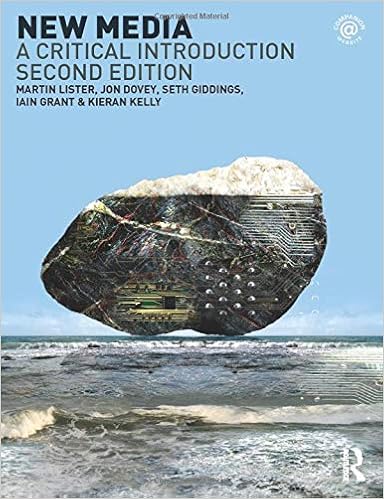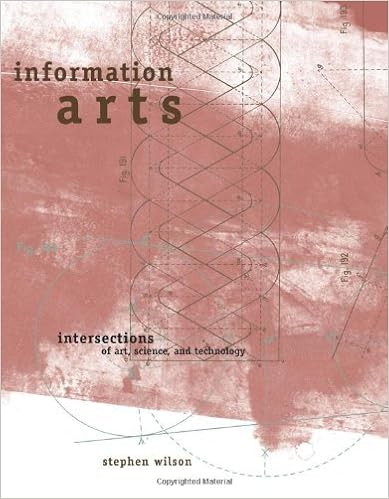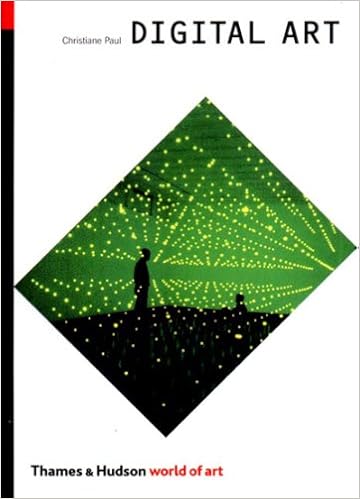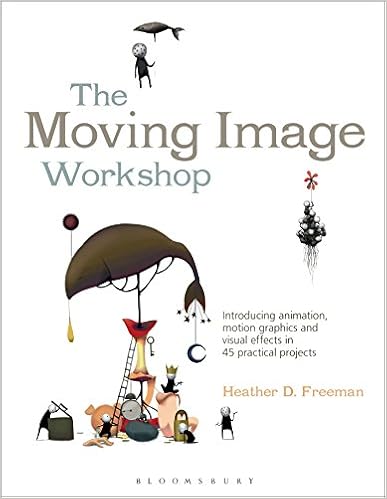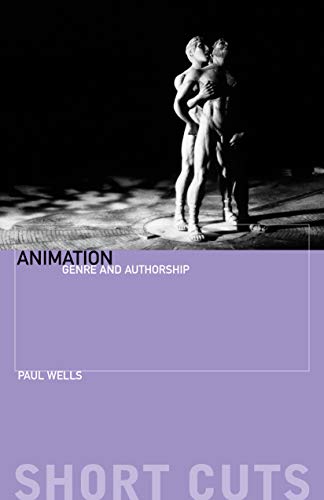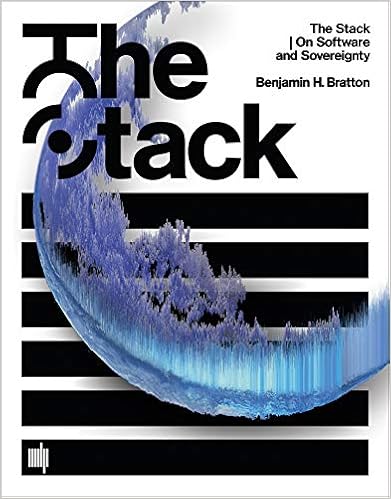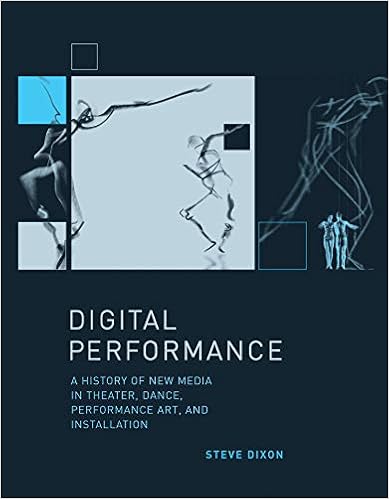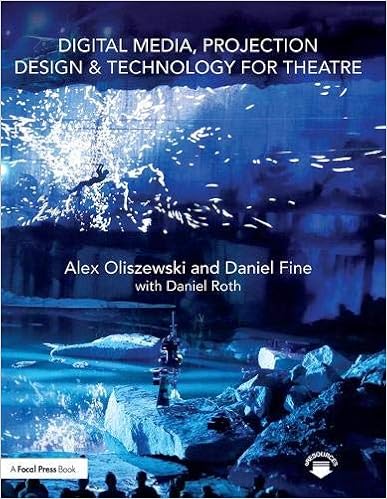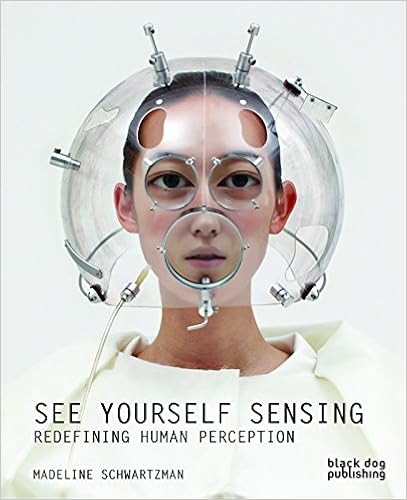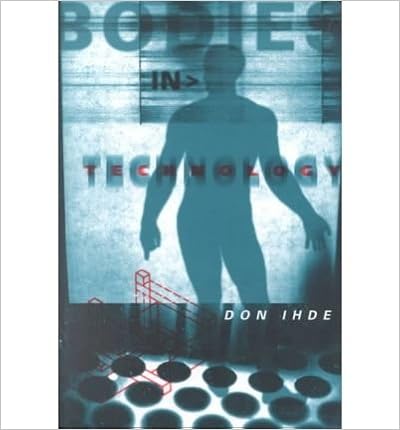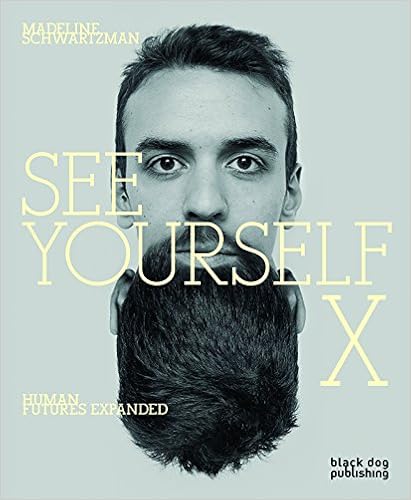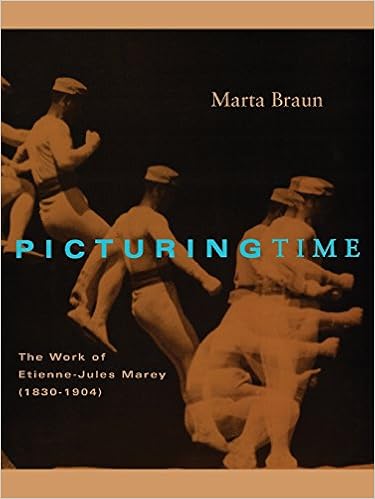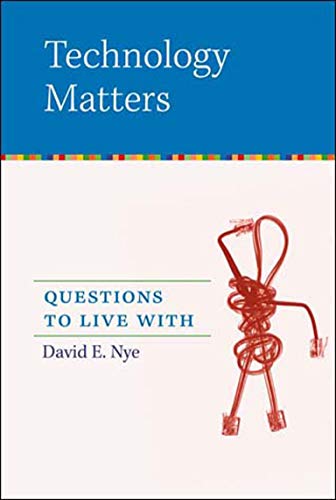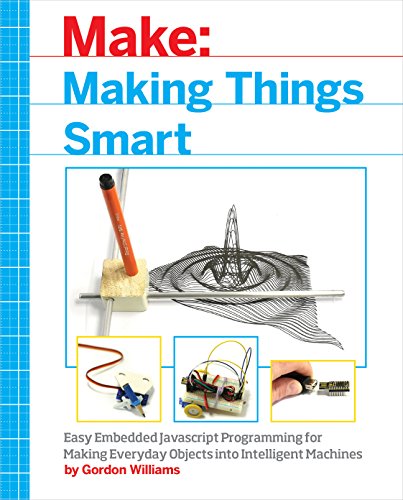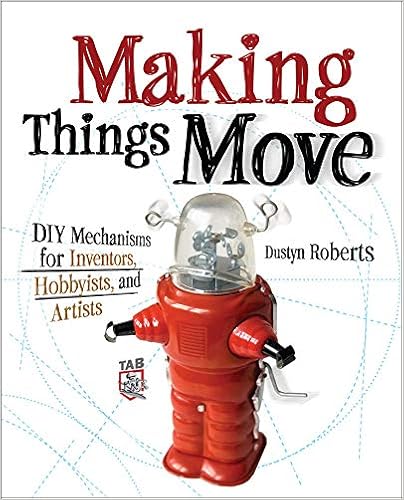Reading Resources
Various resources in art, media, and technology. The list includes the following categories:
- General Reading
- Animation
- Critical Data & Systems
- Digital Performativity
- Embodiment & Senses
- Fiction / Sci-Fi
- Game Cultures
- Interactive Design / HCI
- Moving Image / Cinema
- Philosophy
- Physical Computing
- Posthumanism
- Social Media / Online Life
- Sound & Sonic Arts
- Virtual Realities
General Reading
Media critics remain captivated by the modernist myth of the new: they assume that digital technologies such as the World Wide Web, virtual reality, and computer graphics must divorce themselves from earlier media for a new set of aesthetic and cultural principles. This text offers a theory of mediation for our digital age that challenges this assumption.
Media critics remain captivated by the modernist myth of the new: they assume that digital technologies such as the World Wide Web, virtual reality, and computer graphics must divorce themselves from earlier media for a new set of aesthetic and cultural principles. This text offers a theory of mediation for our digital age that challenges this assumption.
The new media landscape touches every aspect of our social, political and cultural lives. It is more important than ever, therefore, that we are able to understand and explain the complexity of our digital world. Understanding New Media gives readers the tools and the knowledge they need to make sense of the relationship between technologies, media and society.
New Media: A Critical Introduction is a comprehensive introduction to the culture, history, technologies and theories of new media. Written especially for students, the book considers the ways in which ‘new media’ really are new, assesses the claims that a media and technological revolution has taken place and formulates new ways for media studies to respond to new technologies. The authors introduce a wide variety of topics including: how to define the characteristics of new media; social and political uses of new media and new communications; new media technologies, politics and globalization; everyday life and new media; theories of interactivity, simulation, the new media economy; cybernetics, cyberculture, the history of automata and artificial life. Substantially updated from the first edition to cover recent theoretical developments, approaches and significant technological developments, this is the best and by far the most comprehensive textbook available on this exciting and expanding subject.
In this rich compendium, Wilson offers the first comprehensive survey of international artists who incorporate concepts and research from mathematics, the physical sciences, biology, kinetics, telecommunications, and experimental digital systems such as artificial intelligence and ubiquitous computing. In addition to visual documentation and statements by the artists, Wilson examines relevant art-theoretical writings and explores emerging scientific and technological research likely to be culturally significant in the future. He also provides lists of resources including organizations, publications, conferences, museums, research centers, and Web sites.
Digital technology has had a major impact on the production and experience of art during the past decade and a half. Not only have traditional forms of art such as printing, painting, photography, and sculpture been transformed by digital techniques and media, but entirely new forms such as net art, software art, digital installation, and virtual reality have emerged as recognized practices, collected by major museums, institutions, and private collectors the world over. Christiane Paul surveys digital art from its appearance in the early 1990s up to the present day. Drawing a distinction between work that uses digital technology as a tool to produce traditional forms and work that uses it as a medium to create new types of art, she discusses all the key artists and works. The book explores themes addressed by and raised by the art, such as viewer interaction, artificial life and intelligence, political and social activism, networks, and telepresence, as well as issues such as the collection, presentation, and preservation of digital art, the virtual museum, and ownership and copyright. 180 illustrations, 100 in color.
This reader collects the texts, videos, and computer programs―many of them now almost impossible to find―that chronicle the history and form the foundation of the still-emerging field of new media. General introductions by Janet Murray and Lev Manovich, along with short introductions to each of the texts, place the works in their historical context and explain their significance.
Animation
If you need a fun, hands-on introduction to core animation techniques – then look no further! Heather Freeman guides you through a wide range of practical projects, helping you establish and build skills in narrative animation, motion graphics and visual effects. Each chapter begins by summarizing historical and theoretical concerns and connecting them with current practice and applications – all beautifully illustrated with stills from classic commercial and independent films, as well as contemporary examples from student work.
Motion Graphic Design, Third Edition provides a historical and critical overview of how the language of traditional graphic design is combined with the dynamic visual language of cinema in film, television, and interactive media. It features works from highly acclaimed animators and motion graphics studios from across the globe.
Animation: Genre and Authorship explores the distinctive language of animation, its production processes, and the particular questions about who makes it, under what conditions, and with what purpose. In this first study to look specifically at the ways in which animation displays unique models of ‘auteurism’ and how it revises generic categories, Paul Wells challenges the prominence of live-action moviemaking as the first form of contemporary cinema and visual culture. The book also includes interviews with Ray Harryhausen and Caroline Leaf, and a full timeline of the history of animation.
Critical Data & Systems
In The Stack, Benjamin Bratton proposes that these different genres of computation—smart grids, cloud platforms, mobile apps, smart cities, the Internet of Things, automation—can be seen not as so many species evolving on their own, but as forming a coherent whole: an accidental megastructure called The Stack that is both a computational apparatus and a new governing architecture. We are inside The Stack and it is inside of us.
We live in the era of Big Data, with storage and transmission capacity measured not just in terabytes but in petabytes (where peta- denotes a quadrillion, or a thousand trillion). Data collection is constant and even insidious, with every click and every “like” stored somewhere for something. This book reminds us that data is anything but “raw,” that we shouldn’t think of data as a natural resource but as a cultural one that needs to be generated, protected, and interpreted.
In this masterwork of original thinking and research, Shoshana Zuboff provides startling insights into the phenomenon that she has named surveillance capitalism. The stakes could not be higher: a global architecture of behavior modification threatens human nature in the twenty-first century just as industrial capitalism disfigured the natural world in the twentieth. Zuboff vividly brings to life the consequences as surveillance capitalism advances from Silicon Valley into every economic sector. Vast wealth and power are accumulated in ominous new “behavioral futures markets,” where predictions about our behavior are bought and sold, and the production of goods and services is subordinated to a new “means of behavioral modification.”
Digital Performativity
The past decade has seen an extraordinarily intense period of experimentation with computer technology within the performing arts. Digital media has been increasingly incorporated into live theater and dance, and new forms of interactive performance have emerged in participatory installations, on CD-ROM, and on the Web. In Digital Performance, Steve Dixon traces the evolution of these practices, presents detailed accounts of key practitioners and performances, and analyzes the theoretical, artistic, and technological contexts of this form of new media art.
Digital Media, Projection Design, and Technology for Theatre covers the foundational skills, best practices, and real-world considerations of integrating digital media and projections into theatre. The authors, professional designers and university professors of digital media in live performance, provide readers with a narrative overview of the professional field, including current industry standards and expectations for digital media/projection design, its related technologies and techniques. The book offers a practical taxonomy of what digital media is and how we create meaning through its use on the theatrical stage.
This book includes a cross-section of projects from outstanding global design agencies such as teamLab, Dem, and Random International. When placed in conjunction with testaments from practising designers, these examples provide a comprehensive introduction to interactive installation art.
Embodiment & Senses
Did you know that we can see with our tongue? Or that we can plug our nervous system directly into a computer? With cybernetics, prosthetics, robotics, nanotechnology and neuroscience altering the way we perceive and experience space, the body has re-emerged as an important architectural site, revealing its astonishing potential as a creative medium. See Yourself Sensing: Redefining Human Perception is an explosive and unique survey that captures the fascinating relationship between design, the body, the senses, and technology.
New technologies suggest new ideas about embodiment: our “reach” extends to global sites through the Internet; we enter cyberspace through the engines of virtual reality. In this book, a leading philosopher of technology explores the meaning of bodies in technology-how the sense of our bodies and of our orientation in the world is affected by the various information technologies.
How the Body Shapes the Mind is an interdisciplinary work that addresses philosophical questions by appealing to evidence found in experimental psychology, neuroscience, studies of pathologies, and developmental psychology. There is a growing consensus across these disciplines that the contribution of embodiment to cognition is inescapable. Because this insight has been developed across a variety of disciplines, however, there is still a need to develop a common vocabulary that is capable of integrating discussions of brain mechanisms in neuroscience, behavioral expressions in psychology, design concerns in artificial intelligence and robotics, and debates about embodied experience in the phenomenology and philosophy of mind.
See Yourself X explores all forms of extension of the head into space, including new organs, hair dos, masks, head constructions and gear, headdresses, prosthetics and helmets by a range of interaction designers, fashion designers, photographers, illustrators, hair artists, painters and scientists. Conceptual topics include the obliteration of the face in fashion and art; the transformation of the head using masks, prostheses, biological modification, and post-human displacement; the projection of politics, power and virility via wild extensions of the head; the translation, decoding and deployment of the brain and dismantling of the intact body, and the representation of human traits and psychology via the analysis and deciphering of facial features.
Sci-Fi
William Gibson revolutionised science fiction in his 1984 debut Neuromancer. The writer who gave us the matrix and coined the term ‘cyberspace’ produced a first novel that won the Hugo, Nebula and Philip K. Dick Awards, and lit the fuse on the Cyberpunk movement.
A collection of 98 enthralling and pulse-quickening stories, spanning five decades, venerates the remarkable imagination of J. G. Ballard. With a body of work unparalleled in twentieth-century literature, J. G. Ballard is recognized as one of the greatest and most prophetic writers in the world. With the much-hailed release of The Complete Stories of J. G. Ballard, readers now have a means to celebrate the unmatched range and mesmerizing cadences of a literary genius.
Collection includes: The Man in the High Castle • The Three Stigmata of Palmer Eldritch • Do Androids Dream of Electric Sheep? • Ubik • Martian Time-Slip • Dr. Bloodmoney • Now Wait for Last Year • Flow My Tears, the Policeman Said • A Scanner Darkly • A Maze of Death • VALIS • The Divine Invasion • The Transmigration of Timothy Archer
Game Cultures
In In-Game, Gordon Calleja examines what exactly it is that makes digital games so uniquely involving and offers a new, more precise, and game-specific formulation of this involvement. One of the most commonly yet vaguely deployed concepts in the industry and academia alike is immersion—a player’s sensation of inhabiting the space represented onscreen. Overuse of this term has diminished its analytical value and confused its meaning, both in analysis and design. Rather than conceiving of immersion as a single experience, Calleja views it as blending different experiential phenomena afforded by involving gameplay. He proposes a framework (based on qualitative research) to describe these phenomena: the player involvement model.
Videogames are an expressive medium, and a persuasive medium; they represent how real and imagined systems work, and they invite players to interact with those systems and form judgments about them. In this innovative analysis, Ian Bogost examines the way videogames mount arguments and influence players. Drawing on the 2,500-year history of rhetoric, the study of persuasive expression, Bogost analyzes rhetoric’s unique function in software in general and videogames in particular. The field of media studies already analyzes visual rhetoric, the art of using imagery and visual representation persuasively.
In this new edition of the pioneering text, students learn to assess the major theories used to analyze games, such as ludology and narratology, and gain familiarity with the commercial and organizational aspects of the game industry. Drawing from historical and contemporary examples, the student-friendly text also explores the aesthetics of games, evaluates the cultural position of video games, and considers the potential effects of both violent and “serious” games. Extensively illustrated and featuring discussion questions, a glossary of key terms, and a detailed video game history timeline, this new edition is an indispensable resource for students, scholars, and teachers interested in examining the ways video games continue to reshape entertainment and society.
In this ground-breaking book, visionary game designer Jane McGonigaI challenges conventional thinking and shows that games – far from being simply escapist entertainment – have the potential not only to radically improve our own lives but to change the world.
Interactive Design / HCI
This book will help you design media that engages, entertains, communicates and ‘sticks’ with the audience. Packed with examples of groundbreaking interactive design, this book provides a solid introduction to the principles of interactive communication and detailed case studies from world-leading industry experts. The Fundamentals of Interactive Design takes you step by step through each stage of the creative process – from inspiration to practical application of designing interfaces and interactive experiences. With a visually engaging and exciting layout this book is an invaluable overview of the state of the art and the ongoing evolution of digital design, from where it is now to where it’s going in the future.
Digital technology has changed the way we interact with everything from the games we play to the tools we use at work. Designers of digital technology products no longer regard their job as designing a physical object―beautiful or utilitarian―but as designing our interactions with it. In Designing Interactions, award-winning designer Bill Moggridge introduces us to forty influential designers who have shaped our interaction with technology. Moggridge, designer of the first laptop computer (the GRiD Compass, 1981) and a founder of the design firm IDEO, tells us these stories from an industry insider’s viewpoint, tracing the evolution of ideas from inspiration to outcome.
Even the smartest among us can feel inept as we try to figure out the shower control in a hotel or attempt to navigate an unfamiliar television set or stove. When The Design of Everyday Things was published in 1988, cognitive scientist Don Norman provocatively proposed that the fault lies not in ourselves, but in design that ignores the needs and psychology of people. Fully revised to keep the timeless principles of psychology up to date with ever-changing new technologies, The Design of Everyday Things is a powerful appeal for good design, and a reminder of how — and why — some products satisfy while others only disappoint.
Moving Image / Cinema
In this book, Lev Manovich uses concepts from film theory, art history, literary theory, and computer science and also develops new theoretical constructs, such as cultural interface, spatial montage, and cinematography. The theory and history of cinema play a particularly important role in the book. Among other topics, Manovich discusses parallels between the histories of cinema and of new media, digital cinema, screen and montage in cinema and in new media, and historical ties between avant-garde film and new media.
Tracking the changing forms of video art in relation to the revolution in electronic and digital imaging that has taken place during the last 50 years, A History of Video Art orients video art in the wider art historical context, with particular reference to the shift from the structuralism of the late 1960s and early 1970s to the post-modernist concerns of the 1980s and early 1990s.
Etienne-Jules Marey was an inventor whose methods of recording movement revolutionized our way of visualizing time and motion. Best remembered for his chronophotography, Marey constructed a single-camera system that led the way to cinematography. Picturing Time, the first complete survey of Marey’s work, investigates the far reaching effects of Marey’s inventions on stream-of-consciousness literature, psychoanalysis, Bergsonian philosophy, and the art of cubists and futurists.
Philosophy
The advent of machine technology has given rise to some of the deepest problems of modern thought. This newly packaged collection featuring Martin Heidegger’s celebrated essay The Question Concerning Technology, is an essential landmark in the philosophy of science from one of the most influential and profound thinkers of the twentieth century.
Technology’s impact on and implications for the social, ethical, political, and cultural dimensions of our world must be seriously considered and addressed. Philosophy of Technology is a clear introduction to one of philosophy’s newest issues. Don Ihde critically examines the impact of technological developments on various cultures throughout history-from the earliest feats of engineering and architecture to the cutting-edge developments in artificial intelligence- with an aim to understanding the human implications within a world technological culture.
Technology matters, writes David Nye, because it is inseparable from being human. We have used tools for more than 100,000 years, and their central purpose has not always been to provide necessities. People excel at using old tools to solve new problems and at inventing new tools for more elegant solutions to old tasks. Perhaps this is because we are intimate with devices and machines from an early age—as children, we play with technological toys: trucks, cars, stoves, telephones, model railroads, Playstations. Through these machines we imagine ourselves into a creative relationship with the world. As adults, we retain this technological playfulness with gadgets and appliances—Blackberries, cell phones, GPS navigation systems in our cars.
Media philosopher Vilém Flusser proposed a revolutionary new way of thinking about photography. An analysis of the medium in terms of aesthetics, science and politics provided him with new ways of understanding both the cultural crises of the past and the new social forms nascent within them. Flusser showed how the transformation of textual into visual culture (from the linearity of history into the two-dimensionality of magic) and of industrial into post-industrial society (from work into leisure) went hand in hand, and how photography allows us to read and interpret these changes with particular clarity.
Physical Computing
This valuable little book offers a thorough introduction to the open-source electronics prototyping platform that’s taking the design and hobbyist world by storm. Getting Started with Arduino gives you lots of ideas for Arduino projects and helps you get going on them right away. From getting organized to putting the final touches on your prototype, all the information you need is right in the book.
Want to create devices that interact with the physical world? This cookbook is perfect for anyone who wants to experiment with the popular Arduino microcontroller and programming environment. You’ll find more than 200 tips and techniques for building a variety of objects and prototypes such as toys, detectors, robots, and interactive clothing that can sense and respond to touch, sound, position, heat, and light.
Building electronic projects that interact with the physical world is good fun. But when devices that you’ve built start to talk to each other, things really start to get interesting. Through a series of simple projects, you’ll learn how to get your creations to communicate with one another by forming networks of smart devices that carry on conversations with you and your environment.
In Making Things Move: DIY Mechanisms for Inventors, Hobbyists, and Artists, you’ll learn how to successfully build moving mechanisms through non-technical explanations, examples, and do-it-yourself projects–from kinetic art installations to creative toys to energy-harvesting devices. Photographs, illustrations, screen shots, and images of 3D models are included for each project.
Building electronic projects that interact with the physical world is good fun. But when devices that you’ve built start to talk to each other, things really start to get interesting. Through a series of simple projects, you’ll learn how to get your creations to communicate with one another by forming networks of smart devices that carry on conversations with you and your environment. Making Things Smart teaches the fundamentals of the powerful ARM microcontroller by walking beginners and experienced users alike through easily assembled projects comprised of inexpensive, hardware-store parts. Current ARM programming books take a bland, textbook approach focused on complex, beginner-unfriendly languages like C or ARM Assembler. Making Things Smart uses Espruino (JavaScript for Hardware), flattening the learning curve.
Posthumanism
What does it mean to think beyond humanism? Is it possible to craft a mode of philosophy, ethics, and interpretation that rejects the classic humanist divisions of self and other, mind and body, society and nature, human and animal, organic and technological? Can a new kind of humanities—posthumanities—respond to the redefinition of humanity’s place in the world by both the technological and the biological or “green” continuum in which the “human” is but one life form among many?
Donna Haraway analyses accounts, narratives, and stories of the creation of nature, living organisms, and cyborgs (cybernetic components); showing how deeply cultural assumptions penetrate into allegedly value-neutral medical research.
In this age of DNA computers and artificial intelligence, information is becoming disembodied even as the “bodies” that once carried it vanish into virtuality. While some marvel at these changes, envisioning consciousness downloaded into a computer or humans “beamed” Star Trek-style, others view them with horror, seeing monsters brooding in the machines. In How We Became Posthuman, N. Katherine Hayles separates hype from fact, investigating the fate of embodiment in an information age.
Social Media / Life Online
With the rise of web 2.0 and social media platforms taking over vast tracts of territory on the internet, the media landscape has shifted drastically in the past 20 years, transforming previously stable relationships between media creators and consumers. The Social Media Reader is the first collection to address the collective transformation with pieces on social media, peer production, copyright politics, and other aspects of contemporary internet culture from all the major thinkers in the field.
“Life on the Screen” is a book not about computers, but about people and how computers are causing us to reevaluate our identities in the age of the Internet. We are using life on the screen to engage in new ways of thinking about evolution, relationships, politics, sex, and the self. “Life on the Screen” traces a set of boundary negotiations, telling the story of the changing impact of the computer on our psychological lives and our evolving ideas about minds, bodies, and machines. What is emerging, Turkle says, is a new sense of identity– as decentered and multiple. She describes trends in computer design, in artificial intelligence, and in people’s experiences of virtual environments that confirm a dramatic shift in our notions of self, other, machine, and world. The computer emerges as an object that brings postmodernism down to earth.
Technology has become the architect of our intimacies. Online, we fall prey to the illusion of companionship, gathering thousands of Twitter and Facebook friends, and confusing tweets and wall posts with authentic communication. But this relentless connection leads to a deep solitude. MIT professor Sherry Turkle argues that as technology ramps up, our emotional lives ramp down. Based on hundreds of interviews and with a new introduction taking us to the present day, Alone Together describes changing, unsettling relationships between friends, lovers, and families.
Sound & Sonic Arts
The book explores the worlds of sonic arts and sound design through their history and development, and looks at the present state of these extraordinarily diverse genres through the works and words of established artists and through an examination of the wide range of practices that currently come under the heading of sonic arts. The technologies that are used and the impact that they have upon the work are also discussed. Additionally, The Fundamentals of Sonic Arts & Sound Design considers new and radical approaches to sound recording, performance, installation works and exhibitions and visits the worlds of the sonic artist and the sound designer.
A comprehensive text and reference that covers all aspects of computer music, including digital audio, synthesis techniques, signal processing, musical input devices, performance software, editing systems, algorithmic composition, MIDI, synthesizer architecture, system interconnection, and psychoacoustics. The Computer Music Tutorial is a comprehensive text and reference that covers all aspects of computer music, including digital audio, synthesis techniques, signal processing, musical input devices, performance software, editing systems, algorithmic composition, MIDI, synthesizer architecture, system interconnection, and psychoacoustics.
In Cracked Media, Caleb Kelly explores how the deliberate utilization of the normally undesirable (a crack, a break) has become the site of productive creation. Cracked media, Kelly writes, slides across disciplines, through music, sound, and noise. Cracked media encompasses everything from Cage’s silences and indeterminacies, to Paik’s often humorous tape works, to the cold and clean sounds of digital glitch in the work of Tone and Oval. Kelly offers a detailed historical account of these practices, arguing that they can be read as precursors to contemporary new media.
Handmade Electronic Music: The Art of Hardware Hacking provides a long-needed, practical, and engaging introduction to the craft of making―as well as creatively cannibalizing―electronic circuits for artistic purposes. With a sense of adventure and no prior knowledge, the reader can subvert the intentions designed into devices such as radios and toys to discover a new sonic world. You will also learn how to make contact microphones, pickups for electromagnetic fields, oscillators, distortion boxes, mixers, and unusual signal processors cheaply and quickly.
Integrating contributions from a wide range of disciplines—including architecture, music, acoustics, evolution, anthropology, cognitive psychology, audio engineering, and many others—Spaces Speak, Are You Listening? establishes the concepts and language of aural architecture. These concepts provide an interdisciplinary guide for anyone interested in gaining a better understanding of how space enhances our well-being. Aural architecture is not the exclusive domain of specialists. Accidentally or intentionally, we all function as aural architects.
Virtual Realities
Although many people view virtual reality as a totally new phenomenon, it has its foundations in an unrecognized history of immersive images. Indeed, the search for illusionary visual space can be traced back to antiquity. In this book, Oliver Grau shows how virtual art fits into the art history of illusion and immersion. He describes the metamorphosis of the concepts of art and the image and relates those concepts to interactive art, interface design, agents, telepresence, and image evolution. Grau retells art history as media history, helping us to understand the phenomenon of virtual reality beyond the hype.
In From Technological to Virtual Art, respected historian of art and technology Frank Popper traces the development of immersive, interactive new media art from its historical antecedents through today’s digital, multimedia, and networked art. Popper shows that contemporary virtual art is a further refinement of the technological art of the late twentieth century and also a departure from it. What is new about this new media art, he argues, is its humanization of technology, its emphasis on interactivity, its philosophical investigation of the real and the virtual, and its multisensory nature.
This book brings together critical essays along with artists’ projects to explore the many issues raised by the creation of virtual environments and to provide a glimpse into worlds that have been much discussed but rarely seen.The book opens with eleven essays that approach the social and cultural implications of cyberspace from the perspective of cultural studies, communications, art history, art criticism, English, and women’s studies.
Is there a significant difference in attitude between immersion in a game and immersion in a movie or novel? What are the new possibilities for representation offered by the emerging technology of virtual reality? As Marie-Laure Ryan demonstrates in Narrative as Virtual Reality, the questions raised by new, interactive technologies have their precursors and echoes in pre-electronic literary and artistic traditions. Formerly a culture of immersive ideals―getting lost in a good book, for example―we are becoming, Ryan claims, a culture more concerned with interactivity. Approaching the idea of virtual reality as a metaphor for total art, Narrative as Virtual Reality applies the concepts of immersion and interactivity to develop a phenomenology of reading.


